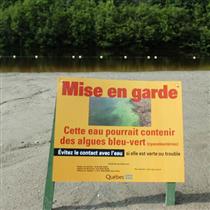"Come forth into the light of things, let nature be your teacher."
"Come forth into the light of things, let nature be your teacher."
~ William Wordsworth
“I wonder if the snow loves the trees and fields, that it kisses them so gently? And then it covers them up snug, you know, with a white quilt; and perhaps it says "Go to sleep, darlings, till the summer comes again.”
~ Lewis Carroll
“I wonder if the snow loves the trees and fields, that it kisses them so gently? And then it covers them up snug, you know, with a white quilt; and perhaps it says "Go to sleep, darlings, till the summer comes again.”
~ Lewis Carroll
Le domaine sacré site patrimonial
le 16 janvier 2013
Le droit
Les propriétaires actuels et futurs du domaine des Pères Sainte-Croix à Lac-Simon devront obtenir une autorisation du conseil municipal avant d'effectuer des modifications à cet endroit puisque l'endroit est maintenant considéré comme site patrimonial.
Ainsi, le bâtiment principal, le pavillon Georges-Gagnon, la croix de chemin située à l'angle de la route 321 et du chemin des Pères, le cimetière, le calvaire et le chemin de croix bordant le littoral du lac Simon sont reconnus par le conseil municipal de l'endroit comme des éléments patrimoniaux conformément à la Loi sur le patrimoine culturel.
Pour la représentante d'un groupe de citoyens désirant acquérir le domaine en vue de créer une coopérative de solidarité sociale, Chantal Crête, cette étape représente un pas important pour pouvoir transformer l'endroit en centre culturel communautaire.
«Il reste maintenant à concrétiser la phase deux qui est d'acheter le site afin de le préserver et de le mettre en valeur», indique MmeCrête. Elle estime qu'il a été démontré que les projets qui réussissent le mieux à assurer la pérennité du patrimoine des lieux de culte désaffectés sont ceux issus d'une mobilisation citoyenne. «Nous détenons les fonds requis pour en faire l'acquisition au prix demandé et nous savons que le projet va permettre de combler des besoins importants en matière d'infrastructures communautaires, culturelles et récréotouristiques», ajoute-t-elle.
Des appuis
Ayant déjà en main l'appui des députés Alexandre Iracà et Mylène Freeman, MmeCrête tentera maintenant d'obtenir celui de la MRC Papineau. «Puisque nous ne recevons pas de nouvelles des Pères Sainte-Croix, nous avons deux choix, croit-elle. Soit on attend qu'ils nous appellent ou on continue à vendre notre projet et à obtenir des appuis pour monter un dossier solide. Ainsi, si jamais nous avons la chance de rencontrer la congrégation, nous serons en mesure de leur démontrer la viabilité et l'importance de notre projet.»
Il a été impossible de discuter avec un représentant des Pères Sainte-Croix pour connaître leur intention dans ce dossier. PLUS >>>
Domaine des pères Sainte-Croix at Lac-Simon, Québec Has Been Saved!











